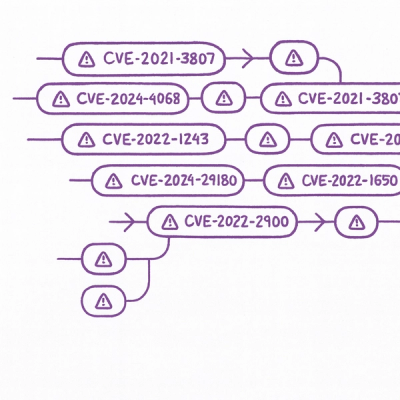
Security News
New Website “Is It Really FOSS?” Tracks Transparency in Open Source Distribution Models
A new site reviews software projects to reveal if they’re truly FOSS, making complex licensing and distribution models easy to understand.
= Sentry lib - painless encryption library
Sentry is a simple wrapper around the mostly undocumented OpenSSL encryption classes.
For now, look at the pseudo test cases in sentry.rb until I can get more examples written out.
== Resources
Install
Rubyforge project
RDocs
Subversion
Collaboa
== Using with ActiveRecord
I wrote this for the purpose of encrypting ActiveRecord attributes. Just require 'sentry', and some new class methods will be available to you:
=== generates_crypted
generates_crypted :password, :mode => :sha | :symmetric | :asymmetric
This is the generic class method to use. Default mode is :sha.
=== generates_crypted_hash_of
generates_crypted_hash_of :password
This is a shortcut for using SHA encryption. No different than specifying generates_crypted :password. In the above example, model.password is a virtual field, and the SHA hash is saved to model.crypted_password
=== asymmetrically_encrypts
asymmetrically_encrypts :password
This is a shortcut for using an asymmetrical algorithm with a private/public key file. To use this, generate a public and private key with Sentry::AsymmetricalSentry.save_random_rsa_key(private_key_file, public_key_file). If you want to encrypt the private key file with a symmetrical algorithm, pass a secret key (neither the key nor the decrypted value will be stored).
Sentry::AsymmetricSentry.save_random_rsa_key(private_key_file, public_key_file, :key => 'secret_password')
What that does, is requires you to pass in that same secret password when accesing the method.
class Model < ActiveRecord::Base generates_crypted :password, :mode => :asymmetric end
model.password = '5234523453425' model.save # password is encrypted and saved to crypted_password in the database, # model.password is cleared and becomes a virtual field. model.password('secret_password') => '5234523453425'
The public and private key file names can be set in config/environment.rb
Sentry::AsymmetricSentry.default_public_key_file = "#{RAILS_ROOT}/config/public.key" Sentry::AsymmetricSentry.default_private_key_file = "#{RAILS_ROOT}/config/private.key"
If the private key was encrypted with the Sentry::AsymmetricalSentry#save_random_rsa_key, you must provide that same key when accessing the AR model.
=== symmetrically_encrypts
symmetrically_encrypts :password
This is a shortcut for using a symmetrical algorithm with a secret password to encrypt the field.
class Model < ActiveRecord::Base generates_crypted :password, :mode => :symmetric end
model.password = '5234523453425' model.save # password is encrypted and saved to crypted_password in the database, # model.password is cleared and becomes a virtual field. model.password => '5234523453425'
The secret password can be set in config/environment.rb
Sentry::SymmetricSentry.default_key = "secret_password"
FAQs
Unknown package
We found that sentry demonstrated a not healthy version release cadence and project activity because the last version was released a year ago. It has 1 open source maintainer collaborating on the project.
Did you know?

Socket for GitHub automatically highlights issues in each pull request and monitors the health of all your open source dependencies. Discover the contents of your packages and block harmful activity before you install or update your dependencies.

Security News
A new site reviews software projects to reveal if they’re truly FOSS, making complex licensing and distribution models easy to understand.

Security News
Astral unveils pyx, a Python-native package registry in beta, designed to speed installs, enhance security, and integrate deeply with uv.

Security News
The Latio podcast explores how static and runtime reachability help teams prioritize exploitable vulnerabilities and streamline AppSec workflows.